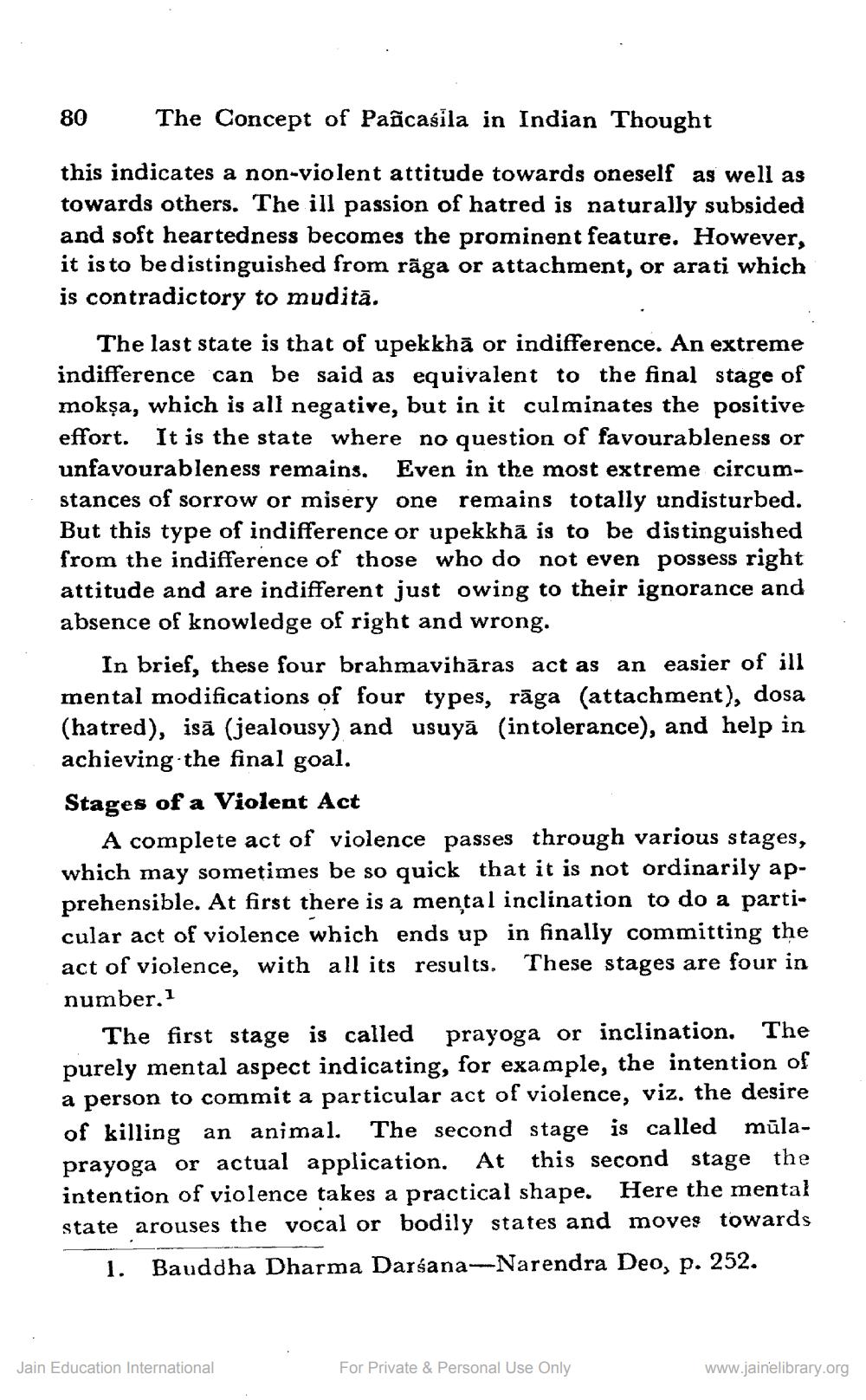________________
80
The Concept of Pañcasila in Indian Thought
this indicates a non-violent attitude towards oneself as well as towards others. The ill passion of hatred is naturally subsided and soft heartedness becomes the prominent feature. However, it is to be distinguished from rāga or attachment, or arati which is contradictory to muditā.
The last state is that of upekkhā or indifference. An extreme indifference can be said as equivalent to the final stage of mokşa, which is all negative, but in it culminates the positive effort. It is the state where no question of favourableness or unfavourableness remains. Even in the most extreme circumstances of sorrow or misery one remains totally undisturbed. But this type of indifference or upekkhā is to be distinguished from the indifference of those who do not even possess right attitude and are indifferent just owing to their ignorance and absence of knowledge of right and wrong.
In brief, these four brahmavihāras act as an easier of ill mental modifications of four types, rāga (attachment), dosa (hatred), isā (jealousy) and usuyā (intolerance), and help in achieving the final goal. Stages of a Violent Act
A complete act of violence passes through various stages, which may sometimes be so quick that it is not ordinarily apprehensible. At first there is a mental inclination to do a particular act of violence which ends up in finally committing the act of violence, with all its results. These stages are four in number. 1
The first stage is called prayoga or inclination. The purely mental aspect indicating, for example, the intention of a person to commit a particular act of violence, viz. the desire of killing an animal. The second stage is called mūlaprayoga or actual application. At this second stage the intention of violence takes a practical shape. Here the mental state arouses the vocal or bodily states and moves towards
1. Bauddha Dharma Darsana-Narendra Deo, p. 252.
Jain Education International
For Private & Personal Use Only
www.jainelibrary.org




